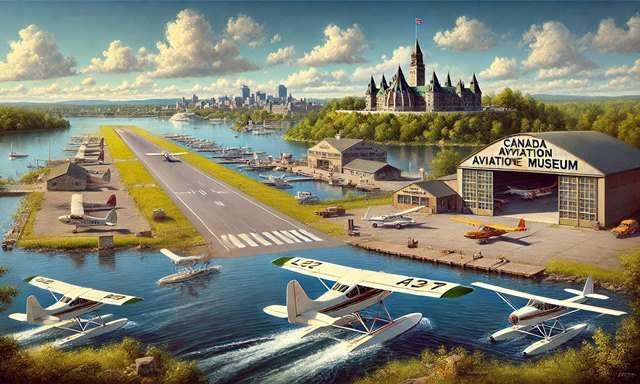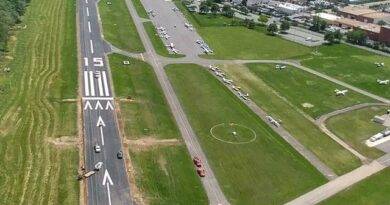Understanding the Differences Between Airport, Aerodrome, Airfield, and Airbase
Aviation involves various types of facilities, each serving a specific purpose. The terms “airport,” “aerodrome,” “airfield,” and “airbase” are often used interchangeably, but they have distinct meanings. This article breaks down each term and explains their differences, along with examples.
What Is an Aerodrome?
An aerodrome is a broad term used to describe any location where aircraft operations occur. It can include basic airstrips, water-based landing areas, or large airports. Aerodromes are used for the takeoff, landing, and ground handling of aircraft, whether for commercial, private, or military purposes.
- Key Features of Aerodromes:
- May have basic infrastructure, such as runways, taxiways, and fueling stations.
- Can be unpaved or simply an area suitable for aircraft operations.
- Not necessarily equipped with extensive passenger services or air traffic control facilities.
- Example: Casement Aerodrome (EIME) in Ireland; Located near Dublin, Casement Aerodrome serves as the headquarters for the Irish Air Corps. It is primarily a military aerodrome but also supports various civil aviation activities on occasion
(Comparisons Wiki, Differ Btw).

What Is an Airport?
An airport is a specific type of aerodrome that meets higher standards set by civil aviation authorities like the International Civil Aviation Organization (ICAO). It is designed primarily for commercial air travel, featuring infrastructure to handle large numbers of passengers and cargo.
- Key Features of Airports:
- Equipped with control towers, terminals, runways, and taxiways.
- Includes passenger amenities like lounges, shops, and security checkpoints.
- Typically serves domestic and international flights, requiring customs and immigration services for the latter.
- Example: Los Angeles International Airport (LAX) in California is one of the busiest airports in the world, known for handling millions of passengers each year (This vs. That).
What Is an Airfield?
An airfield refers to a smaller facility than an airport, focusing more on general aviation rather than commercial air travel. Airfields usually have limited infrastructure and might not have air traffic control towers or large terminals.
- Key Features of Airfields:
- Often consists of a single runway with basic support facilities like small hangars.
- Suitable for private aviation, flight training, or recreational flying.
- May lack passenger amenities and commercial airline services.
- Example: Duxford Airfield in the UK, known for its role in World War II, now serves as a site for aviation enthusiasts and private aircraft
(Comparisons Wiki, Differ Btw).
What Is an Airbase?
An airbase is a military facility that supports the operations of military aircraft. Unlike civilian airports, airbases are equipped to manage specific military needs, including aircraft maintenance, training exercises, and defense operations.
- Key Features of Airbases:
- Restricted access with enhanced security measures.
- Equipped for handling military equipment, aircraft maintenance, and logistics.
- Often located strategically for defense or rapid response.
- Example: Edwards Air Force Base (AFB) in California is a major testing site for the U.S. Air Force, known for its advanced research and flight testing
(Wikipedia).
Summary: Key Differences at a Glance
| Term | Purpose | Infrastructure | Example |
|---|---|---|---|
| Aerodrome | General term for any aircraft operation site | Varies from basic to advanced | Casement Aerodrome (EIME) |
| Airport | Designed for commercial passenger and cargo services | Terminals, control towers, runways | Los Angeles International Airport (LAX) |
| Airfield | Focused on general aviation and small aircraft operations | Basic runways, limited facilities | Duxford Airfield |
| Airbase | Military aircraft operations | High-security, military-focused | Edwards Air Force Base (AFB) |
Conclusion
Understanding the distinctions between aerodromes, airports, airfields, and airbases is crucial for anyone involved in aviation. While all airports are classified as aerodromes due to their function, not all aerodromes qualify as airports. Airfields serve more localized needs, often without the passenger services that airports provide. Airbases, meanwhile, are reserved for military use, emphasizing security and strategic operations. This knowledge helps clarify the diverse range of aviation facilities and their unique roles.
References and Further Reading
- This vs. Tha, Wikipedia, Differ Btw, Difference Between
- https://differbtw.com/difference-between-airport-and-aerodrome/
These sources provide additional insights into the varying functions and classifications of aviation facilities. For more details, consult the official documentation from the International Civil Aviation Organization (ICAO).


